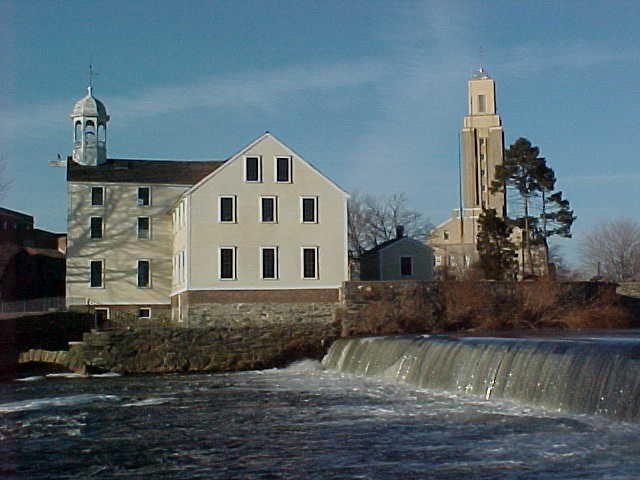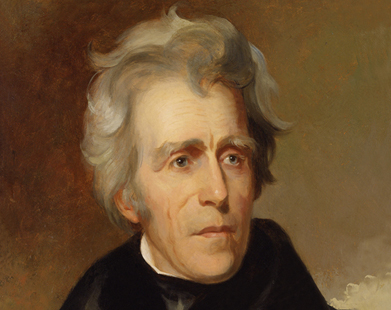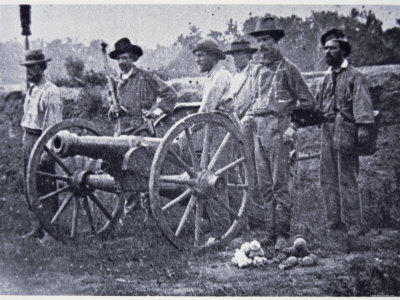I) Pre-capitalist society – capitalism, in primitive form, had long been a part of American society; what became disturbing to many working people after the Civil War was the fact that more and more power was gathered in fewer hands, and that government seemed to be run for the benefit of the few who had gathered this power.
A) Jeffersonian era
1) Yeoman farmer – the ideal of Jeffersonian/Jacksonian republicanism. The yeoman farmer produced crops for his family’s subsistence; any surplus was used to buy those items that the farmer no longer produced himself, which his family “needed”
(a) Justification for Louisiana Purchase – US needed more land to allow for the expansion of opportunities for the yeoman farmer; since the acquisition of the Louisiana land (encompassing the entire Mississippi River Valley) was contrary to the Jeffersonian philosophy of government (smaller is better). The yeoman (white) farmer did have increased opportunities.
2) Artisans under Jefferson
(a) Artisan system – in the ideal artisan system, when an apprentice spent the term of his apprenticeship (usually seven years, beginning at age eleven or so), he had the tools and ability to begin his work life as a journeyman. After saving his earnings, a journeyman could look forward to settling down and opening his own shop, and taking on apprentices and hiring journeymen. By the dint of hard work and frugality, the master craftsman (as he would be known) could look forward to gaining his competency (enough money to live comfortably without working).
(b) The factory system – the growth of the factory system, which began before Jefferson took office, threatened the artisan system, because it allowed machines to undertake the work formerly done by artisans, which decreased the demand for these artisans, and therefore the wage the artisan could demand—as well as the demand for apprentices, who formerly did much of the work for the artisan.
3) The Bank Question – Jefferson killed the First Bank of the United States, because followers of his faction believed that it concentrated too much power in the hands of too few people
(a) The problem of currency
(i) Paper money – does not really exist at this time, at least as we would recognize it. The government does not issue treasury notes, and the paper money issued (bank notes, discussed below) are not backed by the full faith and credit of the United States government, but by each individual bank and the amount of specie (precious metal coins, also discussed below) that the bank has on hand should someone come into the bank and hand over the bank note in demand for specie.
(ii) Bank notes – each bank issued its own currency, which was a promise to hand over specie if the note was presented at the bank. However, each bank was not required to honor another banks note, but it would often redeem these notes at a discounted (less than face value) rate. This led to confusion and reluctance to accept bank notes as payment, since there was no guarantee that one could redeem a particular note for its face value.
(iii) Specie – coins minted in precious metals (gold or silver), which had value because of the metal contained in the coin. This was the preferred method of payment by debtors (people owed money), but was rarely the method of payment because there was never enough specie available to meet demand.
B) Jacksonian period
1) Yeoman farmer – the “western” (meaning anyone living west of the Allegheny Mountains) farmer was the backbone of the Jacksonian Democratic Party
(a) Indian removal – in order to move white farmers onto land acquired during Louisiana Purchase, those people already living there (the Native Americans) had to be moved off
(b) Land speculation – much of the land was bought up by land speculators, who hoped to sell the land at a profit to potential farmers—which tended to drive up the price of land.
2) Artisans – artisans tended to be Jackson backers as well, because of the animosity of Jackson and his followers to the Second National Bank, and therefore to businessmen. Artisans tended, however, to also be in favor of tariffs (taxes paid on imported goods), which tended to protect their jobs, and Jacksonians tended to be in opposition to this.
3) Bank question – Jackson led the fight to kill the Second National Bank, and Congress refused to renew its charter, so the bank died in 1836. Again, there was opposition to so much control being rested in the hands of so few people, particularly when those people were not responsive to any electorate (the Second National Bank, like the first, was a private company who merely had a privileged relationship with the government—so it was not responsive to the government, or to anyone but the partners or stockholders).
C) Lincoln and the Republican Party—“Free Soil, Free Labor, Free Men”
1) Farmers
(a) Homestead Act – “Free Soil” given to those who promised to improve their claim, which re-opened opportunities for white farmers.
(i) Much of this land was on the Great Plains, which received scant rainfall, and left farmers susceptible to greater chances of failure
(ii) Land could be purchased for cash, as well, which meant that speculators purchased much of the land.
(iii) Land was not likely to favor subsistence farming, and to get grain that was grown to a market, the farmer had to rely upon the nearest railroad.
2) Artisans – artisans and their way of life became more threatened as capitalism advanced, and more trades became mechanized—and new industries (like railroading) developed which trained its own workers, and therefore didn’t use the apprenticeship system.
(a) Artisans may have initially supported the Republican system (and many continued to support it even after the war), but more and more artisans tended to see the interests of the Republican Party as being contrary to their own interests.
3) Laborers – laborers, who generally lacked “skills” defined as labor (as a carpenter, a mason, a shoemaker may be defined as having a skill), generally perceived the Republican Party as contrary to their interests.
(a) Free Labor, Free Men – in the antebellum era, laborers felt threatened by the promise to end slavery; freed slaves, it was thought, would move north and compete for the jobs that white laborers held.
II) Capitalist society – there is no one moment in history that we can pinpoint and say that this was when the US economy became totally oriented toward capitalism; however, in the period after the Civil War, it can safely be said that most of the population of the United States was effected by capitalism.
A) Gold bugs and the Rag Baby – during the Civil War, the US government financed much of the cost by printing money—backed by the full faith and credit of the US government—the first time that the government itself printed promissory notes.
1) Gold bugs – nickname for those people (generally well-to-do businessmen and their mouthpieces) who advocated returning the economy of the country to the gold standard, removing paper money from circulation, and returning the economy to “hard” currency (specie).
(a) Gold bugs tended to be debtors (people who lent money), and wanted to be paid back in a currency that was deflationary—which meant that they would get back the full worth of the money they had lent.
2) Greenbackism – Advocated for greenbacks (also known as “the Rag Baby”) wanted to see the inflationary currency prevalent during the war continue. Greenbackers tended to be creditors (people who had received loans), and therefore wanted to be able to pay back those loans with inflated currency (which would be worth less money).
B) Capitalist control of government – while working people felt that they still had some voice in local government; the further government was removed from local control, the less voice they had in it.
1) Class interests – it becomes apparent, as government at the state and federal level increasingly does the bidding of the capitalist class, that the interests of the working-class is in opposition to those interests.
(a) Definition of class – a group of people who, because of common economic interests, develop a common ideology and outlook.
(b) Collective behavior – when there is a common ideology and outlook, then groups of people can act in a collective manner.
(i) Craft unions – groups of workers joined together by a common identity because of a job skill they have acquired.
(ii) Cartels – groups of capitalists joined together because of the desire to maximize profits while minimizing risks
(iii) Labor unions – groups of workers willing to join together with other workers because of a common economic interest, not necessarily because they share a common job skill.
2) Great Upheaval of 1877 – groups of workers and their families identified with the grievances of railroad workers, and hoped to regain influence with the state and federal government that they felt was usurped by the wealth of capitalists.
(a) Toledo example – workers attempted to close down all businesses that they felt were not paying a “fair” wage ($2.50 and day for skilled workers, $2.00 a day for unskilled); the strike was supported by local elites when its focus was the railroad, but that support quickly diminished when the focus became their own businesses
(i) Toledo, like most other large cities, saw the construction of large armories near their downtowns in the aftermath of the 1877 disturbance. Besides the armory, the local militia was “professionalized” because the number of working people in its ranks was felt to diminish the likelihood that it could be used in a similar occurrence.









No comments:
Post a Comment